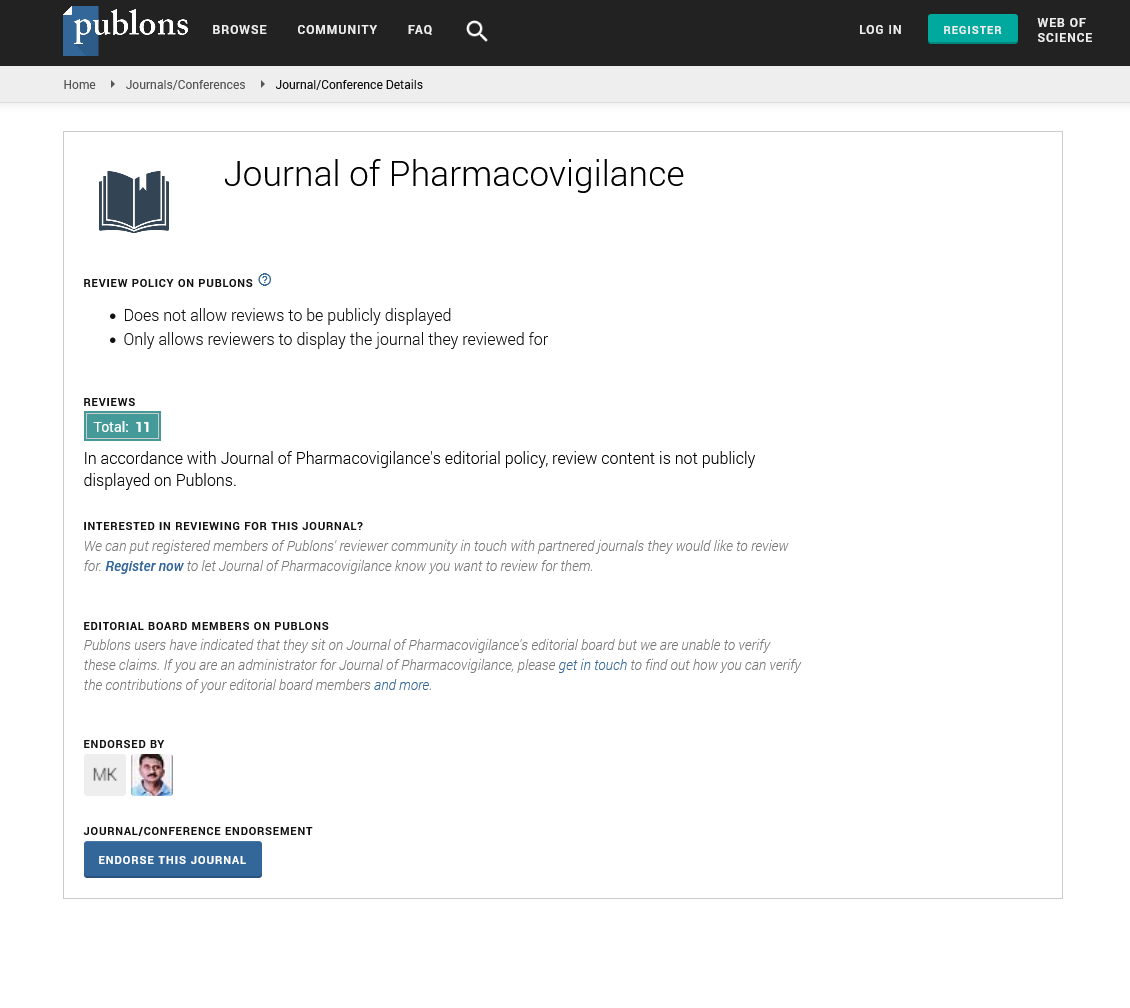Indexed In
- Open J Gate
- JournalTOCs
- The Global Impact Factor (GIF)
- RefSeek
- Hamdard University
- EBSCO A-Z
- OCLC- WorldCat
- Publons
- Euro Pub
- Google Scholar
Useful Links
Share This Page
Journal Flyer

Open Access Journals
- Agri and Aquaculture
- Biochemistry
- Bioinformatics & Systems Biology
- Business & Management
- Chemistry
- Clinical Sciences
- Engineering
- Food & Nutrition
- General Science
- Genetics & Molecular Biology
- Immunology & Microbiology
- Medical Sciences
- Neuroscience & Psychology
- Nursing & Health Care
- Pharmaceutical Sciences
Opinion Article - (2022) Volume 10, Issue 8
Note on Drug Dosage in New Born Baby’s
Gerard Westen*Received: 08-Aug-2022, Manuscript No. JP-22-18137; Editor assigned: 11-Aug-2022, Pre QC No. JP-22-18137(PQ); Reviewed: 25-Aug-2022, QC No. JP-22-18137; Revised: 01-Sep-2022, Manuscript No. JP-22-18137(R); Published: 08-Sep-2022, DOI: 10.35248/2329-6887.22.10.386
Description
Medication is central to drug therapy. Right or wrong, it is the ultimate expression of diagnostic and therapeutic insight. There are marked differences in factors by age group. Yet, for many years, children's doses were rarely derived as a fraction of adult doses.
The best dose is the smallest amount that produces the desired effect without causing side effects. Unfortunately, side effects are an unavoidable part of a drug's overall effectiveness. However, it can be minimized with proper dosage.
When hospitals need to administer medicines to new-borns, they often have to make guesses as to the appropriate dosage. Giving too little can make the medicine ineffective. Giving too much can be harmful. More accurate neonatal dosing remains a challenge due to the difficulty of conducting studies in this population.
A carefully controlled experiment in 129 children studied the sensitivity of apparently healthy children of all ages to oral and subcutaneous atropine. The Minimum Effective Dose (MED) of atropine was determined by its effect on suppressing salivation induced mechanically by chewing gum and/or pharmacologically by subcutaneous injection of meth choline. Differences in individual susceptibility to atropine are large across all age groups and regardless of route of administration (oral, subcutaneous).
Body weights after oral administration were 1-12 months old infants and 12-36 months old children (0.16 and 0.14 mg/kg, respectively), and older children in the 3-6 and 6-6 year old groups. Equivalent results are obtained by subcutaneous administration.
The ratio of oral MED to subcutaneous MED is approximately 3:1 for all age groups. Determining atropine sensitivity in children of various ages provides no evidence to hypothesize atropine resistance or increased physiological vagotism in infants.
The relationship between his MED of atropine in an apparently healthy child and the dose recommended in pediatric care is debated. We recommend calculating your atropine dosage based on body weight. Babies and young children are very sensitive to medications and can only take medications that are specifically designed for their needs. Many medications that can be taken by adults are not suitable for babies. This is because babies are much smaller and respond differently to medications.
If your baby is less than 6 months old, we recommend that you see your doctor before giving any medication. It is important to carefully consider potential safety issues before giving any overthe- counter drug to a child, regardless of age. Many drugs can harm or even kill a child. Babies and toddlers love to put things in their mouths, so all medications should be kept out of reach. Lock medications in a child-safe cabinet.
Drug use can also mean that babies are born addicted to drugs and have to go through withdrawal symptoms after birth. Babies who are regularly exposed to opioids in the womb can develop Neonatal Abstinence Syndrome (NAS), a series of problems that occur as babies experience opioid withdrawal after birth.
Many drugs commonly administered to new born have not been formally approved for use in this very young population, but recent legislative changes are encouraging research into children's drugs. I found this out in my research.
That is, drug labels often do not contain information about the correct dosage to be used in new born, and instead doctors make their best guesses based on experience and information from adults and older children.
Citation: Westen G (2022) Note on Drug Dosage in New Born Baby’s. J Pharmacovigil. 10:386.
Copyright: © 2022 Westen G. This is an open-access article distributed under the terms of the Creative Commons Attribution License, which permits unrestricted use, distribution, and reproduction in any medium, provided the original author and source are credited.

